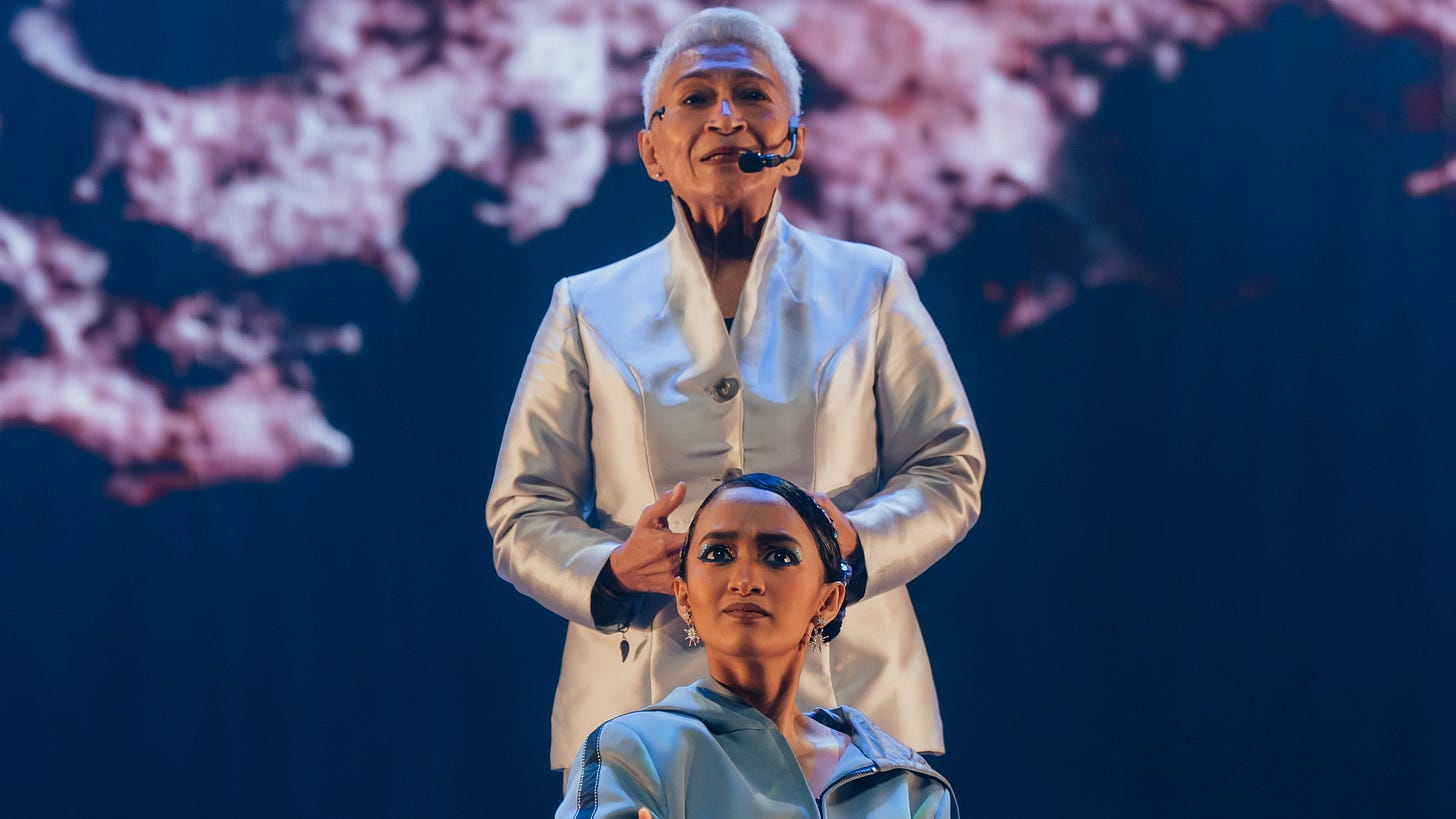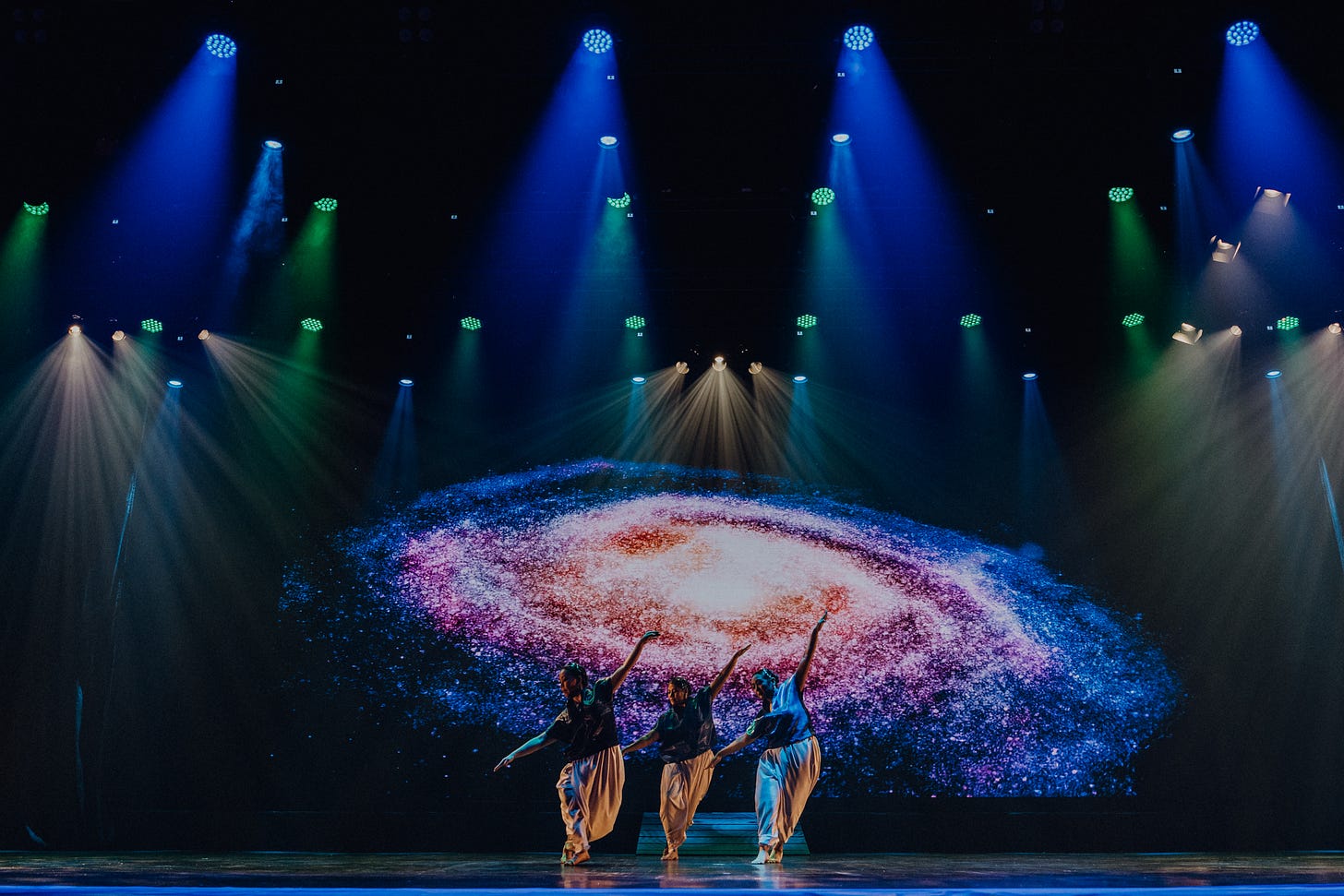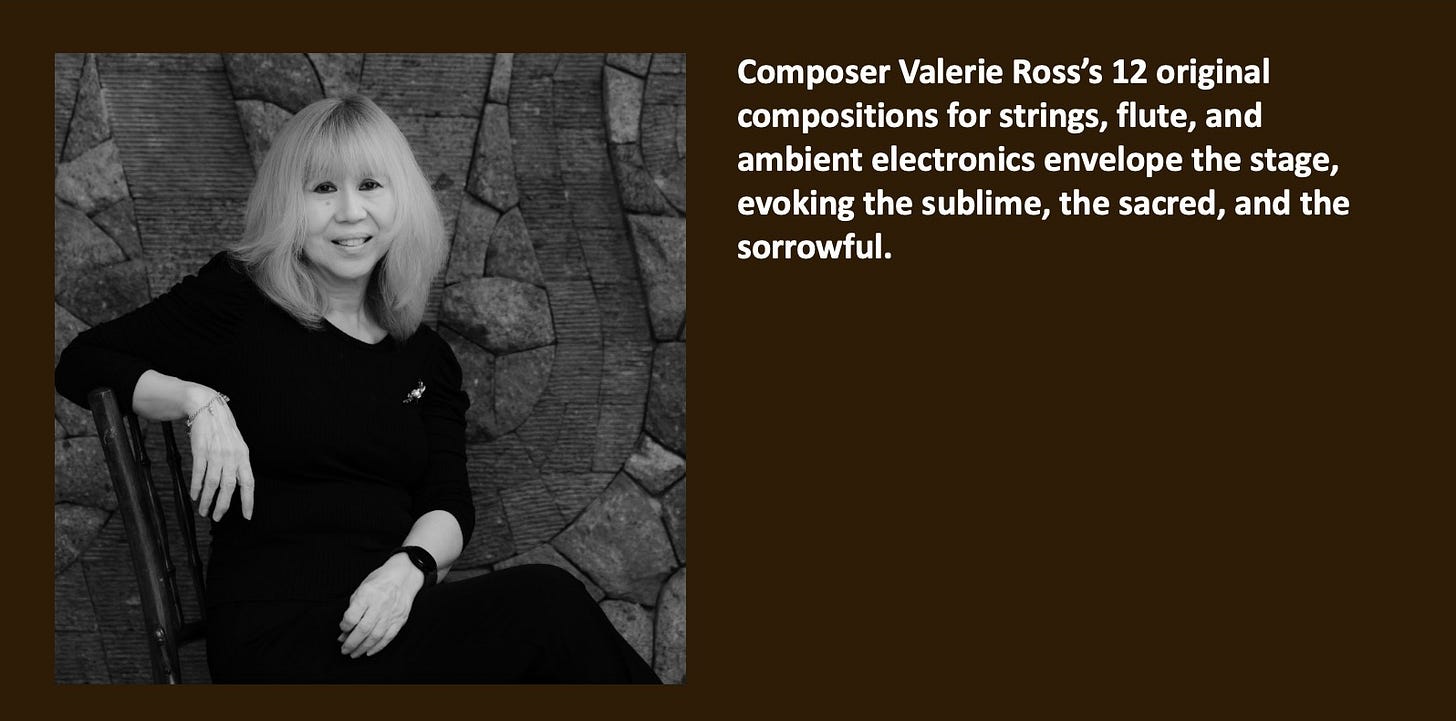Meniti Cakerawala: The four acts
Stories of the cosmic world captured in words and colourful choreography on stage
MENITI CAKERAWALA, the cosmic performance by astrophysicist Tan Sri Mazlan Othman and classical dance icon Padma Shri Datuk Ramli Ibrahim unfolds in four acts.
Act I: Celestial longing — The observatory of dreams
The performance opens with a stirring visual and sonic homage to the Langkawi National Observatory, a symbolic gateway to the cosmos. This act evokes the primordial human impulse to look skyward, a longing shared across time and cultures.
Set against the backdrop of Malaysia’s premier stargazing site, this segment establishes a mood of quiet wonder, echoing ancient nights when early humans first tracked the stars with nothing more than their eyes and intuition.

Mazlan’s voiceover — both scientific and poetic — sets the stage: “We are made of stars…” It’s a philosophical cue that grounds this act in a fundamental question of identity and origin. Dancers in flowing robes swirl under an immersive digital sky, their movements inspired by planetary orbits and solar flares. This first act doesn’t merely introduce astronomy — it suggests that our desire to understand the heavens is inseparable from our need to understand ourselves.
Act II: Entangled origins — Myths and matter
Moving from observation to introspection, the second act plunges into the cosmic origins of the universe, marrying cutting-edge science with timeless mythologies. Here, Ramli’s choreography becomes more experimental. Odissi’s intricate footwork and expressive gestures mirror the trembling uncertainty of quantum mechanics, while contemporary dance motifs channel the chaos and energy of creation.
Visual projections flicker between the Higgs boson and the Hindu Samudra Manthan, between dark matter and the Sumerian goddess Inanna. By juxtaposing quantum entanglement with creation myths, this act invites audiences to consider whether modern physics and ancient cosmology are two languages telling the same story.
The soundscape oscillates between silence and percussive bursts, mimicking the unpredictable heartbeat of the early universe. The dancers seem caught in gravitational fields, orbiting unseen forces, enacting both the beauty and violence of birth — not just of stars, but of the meaning of life itself.
Act III: Mapping the stars — Civilisations and the Cosmos
The third act broadens the perspective, offering a kaleidoscope of cross-cultural cosmological traditions. The stage becomes a rotating celestial map. Dancers take on roles from various pantheons: the Chinese celestial dragons spiral and undulate, Navagraha deities align with planetary motion, Atlas bears the weight of the cosmos, and the Malay Alam Semesta is presented through symbolic patterns and sacred geometry.
This act is a visual dialogue between cultures, showing how diverse civilisations have mapped meaning onto the stars. Costuming becomes elaborate, layered with iconography from different epochs and geographies. Accompanying music shifts in tone and instrumentation, reflecting Gamelan, Carnatic ragas, Chinese guqin, and Western classical forms.

Here, Meniti Cakerawala invites audiences to reflect on shared cosmic curiosity — despite differences in language and belief, we have all gazed up and wondered. The choreography suggests harmony, but also divergence — a constellation of truths, all orbiting the same questions.
Act IV: Earthbound light – Humanity’s cosmic reflection
The final act is both return and revelation. After traversing galaxies and mythscapes, the performance grounds itself in the poetic contemplation of our place in the universe. A single spotlight beams down onto a figure reciting Muhammad Haji Salleh’s verse, reminding us that the stars also live within us. His poetry, minimalist yet profound, acts as a bridge between the cosmic and the human heart.
Composer Valerie Ross’s 12 original compositions for strings, flute, and ambient electronics envelope the stage, evoking the sublime, the sacred, and the sorrowful. These compositions are interwoven with visual art by Jalaini Abu Hassan, whose layered textures — evoking earth, ash, and sky — fill the background with metaphoric landscapes.
This act is introspective, asking: If we are born of stars, what responsibilities do we hold to each other, to our planet, to the vast unknown? Through a final, haunting duet between a dancer and a projected starfield, Meniti Cakerawala closes not with answers, but with a plea — to dream consciously, to wonder ethically, and to act with humility under the heavens.
##CROSSOVER: Click here to read our story, Meniti Cakerawala: When science dances with the stars at www.newasiacurrents.com
All articles, opinions, and events featured in PostScript NAC represent the views of the interviewees, individual writers and contributors, and do not necessarily reflect those of PostScript NAC. While we strive to ensure all information on this post is accurate, complete, and current, PostScript NAC is not responsible for any errors, omissions, or outdated content.



